Introduction
I’ve encountered two interesting types of comments when writing articles. One group consists of BYD fans, the other group consists of Tesla fans. Tesla fans often criticize me whenever I mention a drop in sales figures, as if saying, “As a big V, don’t you even keep up with Tesla’s export figures? You don’t even know what you’re writing about.” On the other hand, BYD fans emphasize that BYD’s technology is the best, whether it’s the blade battery or anything else, and that nobody in the media or industry understands BYD’s path to success.
However, these comments don’t affect my writing. I can try to remain as objective as possible when discussing technology. Sometimes I make mistakes due to my own limited understanding, but I’ll acknowledge them and move on. That’s why I’m writing about BYD again today. Their fast-paced technological innovation offers many opportunities for exploration and study.
Review of BYD’s e-Platform
This is how I understand BYD’s e-Platform technology – I’ve been following it for many years – BYD began promoting its platform technology back in 2018 during the Beijing Auto Show, when they partnered with Toyota and sought to follow the MEB platform model in releasing their own electric vehicles. In other words:
(1) BYD’s e1.0 platform originated from the transition from gas to electric, starting with the first generation e6 (which had a comprehensive range of 300km at that time). During this stage, BYD accumulated experience in a variety of vehicle models. This can be considered the BYD e-Platform 1.0 era.
(2) BYD’s e2.0 platform was proposed during the 2018 Beijing Auto Show with the concept of “33111”. The first “3” refers to a three-in-one drive system, including the drive motor, motor controller, and reducer. The second “3” refers to a three-in-one high-voltage system, including a DC-DC converter, onboard charger, and high-voltage distribution box. The following three “1”s refer to 1 powerful PCB board (which integrates a series of functional controllers such as smart keys, Bluetooth modules, tire pressure monitoring, reversing radar, and air conditioning controllers), 1 intelligent touchscreen – Dilink intelligent network system, and 1 high-performance safety battery.
Based on the subsequent performance, the e-series, except for the E5, which targeted the B-end market in 2019, the overall performance of E2.0 from 2019 to 2021 has not been satisfactory.
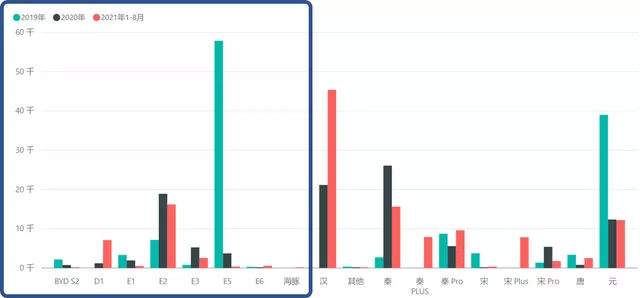
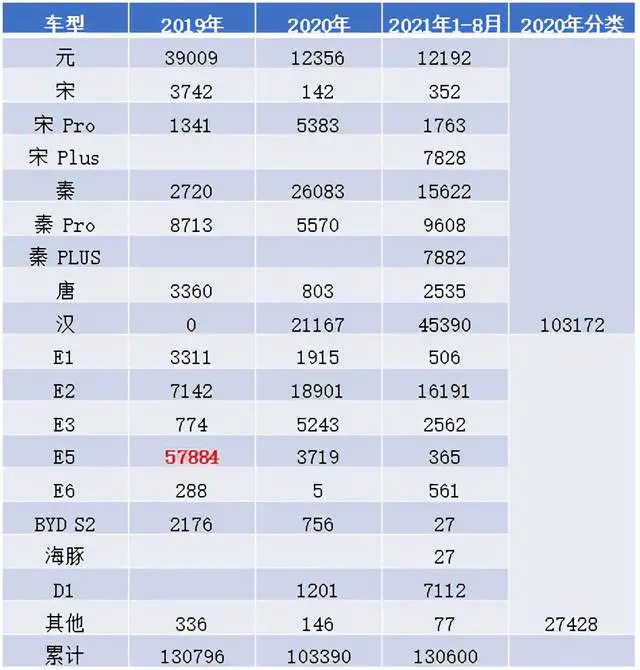 (3) BYD e3.0 platform: released at the Shanghai Auto Show, the main components of the platform include upgraded blade batteries, transitioning from battery modularization to battery-body integration; the original dual 33-block electric drive system has been replaced with an 8-in-1 electric drive system, and an 800V high-voltage fast charging system has been introduced along with the battery pack. The platform also features a wide temperature range and efficient heat pump system for thermal management, and is equipped with four major domain controllers for intelligent control. A self-developed operating system for vehicles has also been proposed, and the increased wheelbase creates a more spacious interior.
(3) BYD e3.0 platform: released at the Shanghai Auto Show, the main components of the platform include upgraded blade batteries, transitioning from battery modularization to battery-body integration; the original dual 33-block electric drive system has been replaced with an 8-in-1 electric drive system, and an 800V high-voltage fast charging system has been introduced along with the battery pack. The platform also features a wide temperature range and efficient heat pump system for thermal management, and is equipped with four major domain controllers for intelligent control. A self-developed operating system for vehicles has also been proposed, and the increased wheelbase creates a more spacious interior.
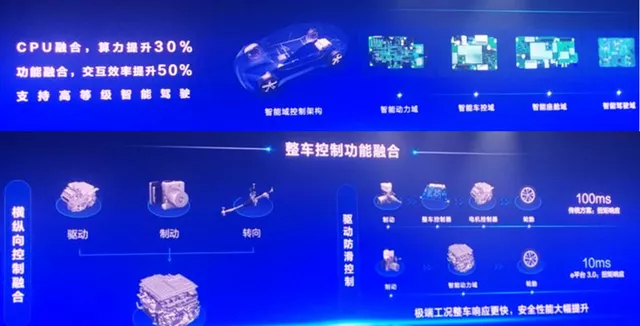
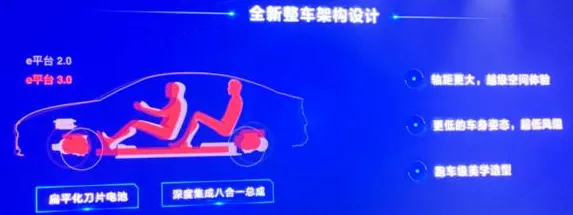
I personally think that after exploring the blade battery, BYD upgraded its dynasty series gradually, and then upgraded its e3.0 platform on that foundation. As shown in the following figure, there were changes in the Qin, Qin Pro, Qin Plus, Song, Song Pro, and Song Plus models, including a shift to blade batteries (with corresponding price adjustments).
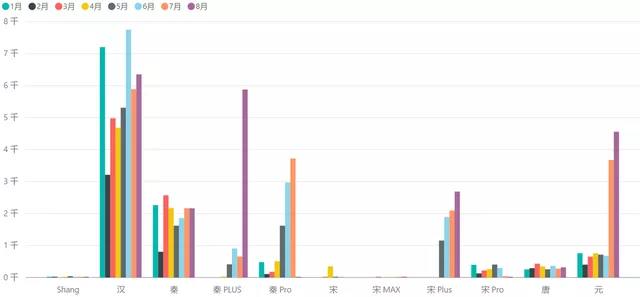
Currently, there are around 4,000 vehicles on the e platform, including the D1.
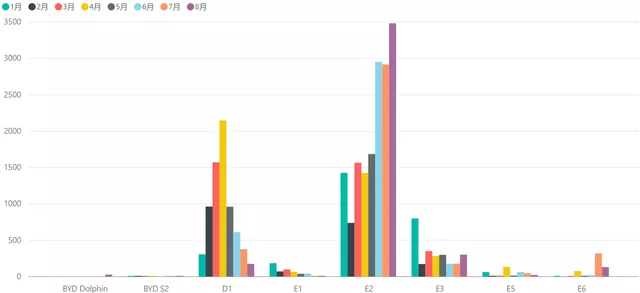
It is worth noting that BYD’s investment in technology and promotion on various network platforms and communities has accumulated a strong reputation (or label) for independent development, attracting many users to become fans. This round of technology promotion can be converted into sales at a certain moment.
BYD e3.0 Upgrade (Part One)
I would like to spend more time gathering information about e3.0. Today, I will mainly focus on fast charging, which is advertised as achieving a maximum range of 150 kilometers with just 5 minutes of charging, under 800V high voltage.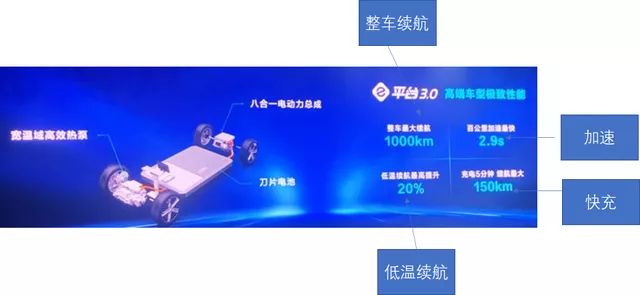
!BYD E3.0 platform’s content, currently used in the Dolphin small car[1]
The implementation method mainly involves two aspects: increasing the fast charging power of the battery and reducing the energy consumption per 100 kilometers. That is to say, considering the current Dolphin’s 60 kW fast charging power, the energy for 5 minutes of charging is 5 kWh, corresponding to a mileage of 48.5 kilometers in 5 minutes.

If a 300-kilometer vehicle model wants to achieve the advertised 150-kilometer charging in 5 minutes, it needs to achieve a 5-minute fast charging energy of 15.45 kWh and a supported fast charging power of 185.4 kW. The 30.7 kWh battery needs to be at about 6C.
If a 400-kilometer vehicle model wants to achieve the same 150-kilometer charging in 5 minutes, it needs to achieve a 5-minute fast charging energy of 16.5 kWh and a supported fast charging power of 198 kW. The 44.9 kWh battery needs to be at 4.4C.
!Decomposition of fast charging speed[1]
The information I collected is as above. If there are any errors, please feel free to point them out.
In summary, this is the first article about the E3.0 platform, and I will sort out the information that I think of when I have time.
I respect the efforts made by BYD engineers, and I believe their work is not in vain. I brought up some things to discuss for seeking truth and being pragmatic, under the condition of not violating confidentiality requirements, to explore the engineering limits that we can achieve.
This article is a translation by ChatGPT of a Chinese report from 42HOW. If you have any questions about it, please email bd@42how.com.